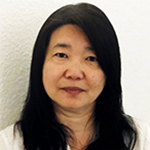An ultra-high sensitivity quantification method of veterinary drugs residues in food
27 January 2022
Shares
- Like
- Digg
- Del
- Tumblr
- VKontakte
- Buffer
- Love This
- Odnoklassniki
- Meneame
- Blogger
- Amazon
- Yahoo Mail
- Gmail
- AOL
- Newsvine
- HackerNews
- Evernote
- MySpace
- Mail.ru
- Viadeo
- Line
- Comments
- Yummly
- SMS
- Viber
- Telegram
- Subscribe
- Skype
- Facebook Messenger
- Kakao
- LiveJournal
- Yammer
- Edgar
- Fintel
- Mix
- Instapaper
- Copy Link
SCIEX’s Global Technical Leader for food and environmental presents a quantitative approach to testing for veterinary drug resides in food.
Veterinary drugs such as antibiotics, antimicrobials and hormones are necessary for therapy and prophylaxis in animal husbandry and food production. However, these chemicals can leave behind residues that persist in animal-derived foods and present potential food safety risks.
Consequently, many countries have established maximum residue limits (MRL) for pharmacologically active substances. For food testing labs, this means choosing appropriate analytical techniques that address both MRLs and achieve lower limits of quantification (LOQ) when dealing with banned toxic compounds.
In this webinar, you will learn about a method that is:
- Ultra-sensitive and can quantify more than 180 pharmacologically active vet drug compounds in three different food matrices down to 0.01 ug/kg for pork and chicken, 0.005 ug/kg for milk
- Mass accurate — rigorous detection with linear dynamic range up to 4 orders of magnitude, without a need of internal standards
- Precise and offers high specificity with the use of ion ratios
Speakers:


Jianru has been part of SCIEX since 2001. She initially was part of the application support team and covered not only proteomics, but also small molecules applications. Jianru moved to technical marketing and focused on food and environmental applications. Since 2018 she has been managing the EMEA technical marketing team and projects. Jianru is also the Global Technical Leader for food and environmental applications.





